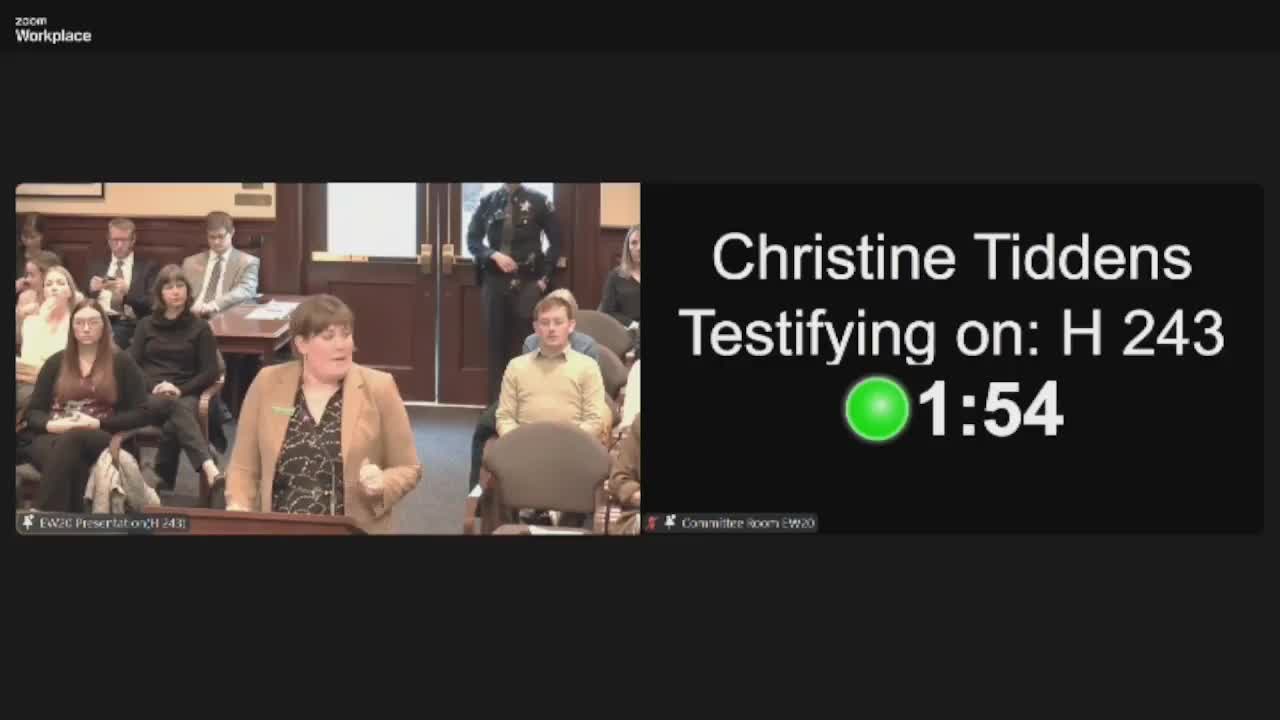Opponents slam Idaho House Bill 243 for weakening child care safety standards
This article was created by AI summarizing key points discussed. AI makes mistakes, so for full details and context, please refer to the video of the full meeting. Please report any errors so we can fix them. Report an error »

During the House Health & Welfare Committee meeting on February 21, 2025, significant concerns were raised regarding House Bill 243, which aims to modify child care regulations in Idaho. The bill proposes to eliminate established child-to-staff ratios and supervision requirements, a move critics argue could jeopardize children's safety.
A key point of contention is the bill's provision that allows individual child care providers to set their own staff ratios. This change has sparked alarm among advocates for child safety, who emphasize that no other state or developed nation has adopted such a flexible approach. Research indicates that loosening ratio standards can lead to increased rates of injuries and fatalities among children.
Additionally, the bill alters supervision requirements, stating that infants and toddlers need only be within either sight or hearing range of caregivers, rather than both. For older children, the bill merely requires that supervision be "appropriate," a vague term that critics fear could lead to inadequate oversight. A tragic example cited was the only reported infant death in Idaho last year, which occurred due to insufficient supervision in a facility not compliant with current standards.
With Idaho already ranking last in the nation for child care regulations, opponents of House Bill 243 argue that rolling back these safety measures could invite negligence and endanger vulnerable children. The committee is urged to reconsider the implications of such changes, emphasizing the need to prioritize child safety over regulatory flexibility. As discussions continue, the future of child care standards in Idaho hangs in the balance.
A key point of contention is the bill's provision that allows individual child care providers to set their own staff ratios. This change has sparked alarm among advocates for child safety, who emphasize that no other state or developed nation has adopted such a flexible approach. Research indicates that loosening ratio standards can lead to increased rates of injuries and fatalities among children.
Additionally, the bill alters supervision requirements, stating that infants and toddlers need only be within either sight or hearing range of caregivers, rather than both. For older children, the bill merely requires that supervision be "appropriate," a vague term that critics fear could lead to inadequate oversight. A tragic example cited was the only reported infant death in Idaho last year, which occurred due to insufficient supervision in a facility not compliant with current standards.
With Idaho already ranking last in the nation for child care regulations, opponents of House Bill 243 argue that rolling back these safety measures could invite negligence and endanger vulnerable children. The committee is urged to reconsider the implications of such changes, emphasizing the need to prioritize child safety over regulatory flexibility. As discussions continue, the future of child care standards in Idaho hangs in the balance.
View full meeting
This article is based on a recent meeting—watch the full video and explore the complete transcript for deeper insights into the discussion.
View full meeting